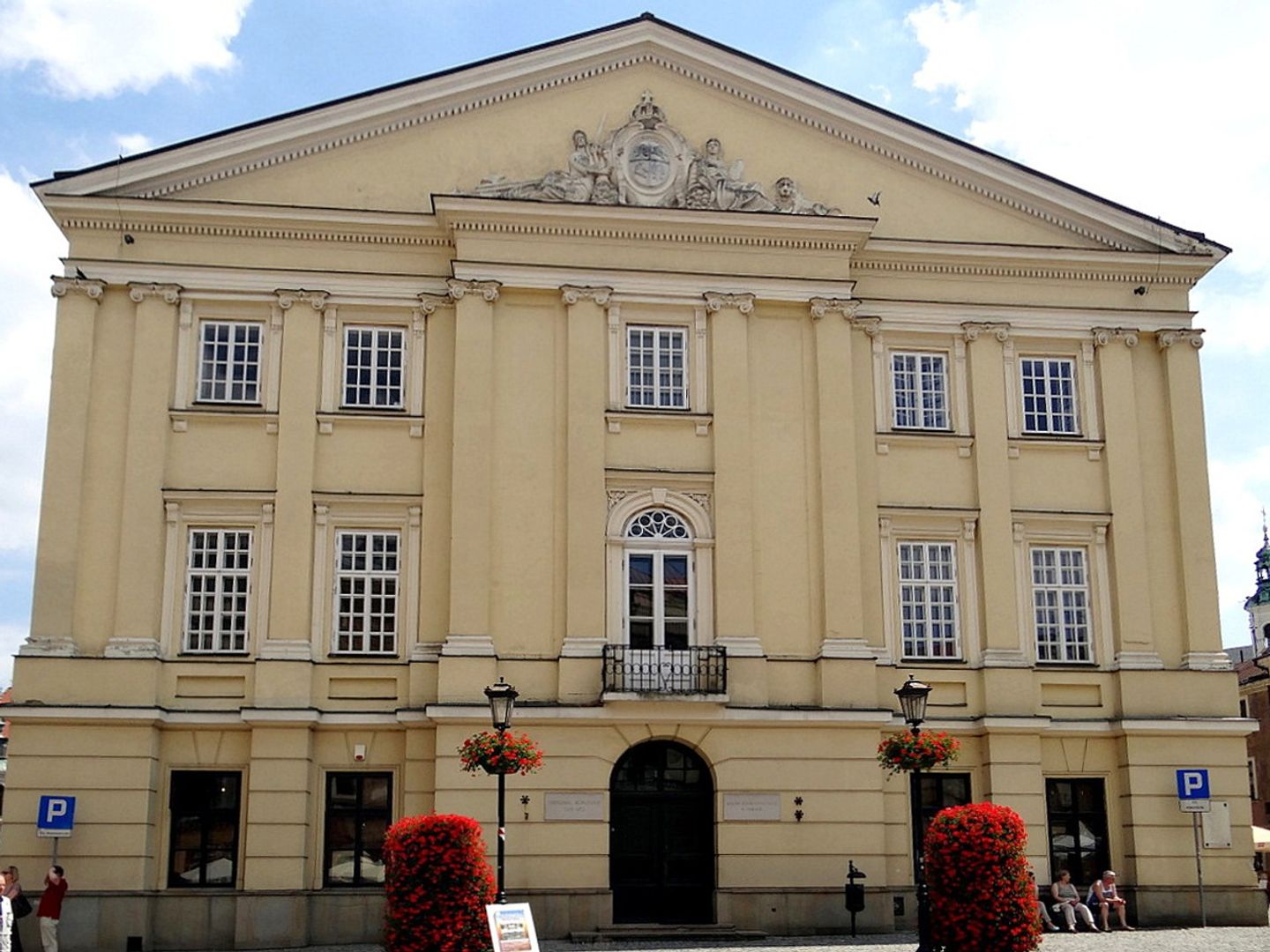The Main Crown Tribunal in Lublin
6.13

Overview
The Crown Tribunal in Lublin was the highest court of appeal for land law cases in the Crown of the Kingdom of Poland. Established in 1578 by King Stephen Báthory during a general sejm, the tribunal marked a significant shift as the king relinquished his role as the supreme judge in favor of a noble estate court. Lublin became the seat of the tribunal for Lesser Poland, which elevated the city to a legal center within the Polish-Lithuanian Commonwealth. This attracted lawyers and students from across the country and abroad, especially as other university centers declined. The tribunal contributed to the city's prosperity, reflected in the growth of magnate palaces and noble manors.
The current tribunal building, located in the Main Market Square, was originally a wooden town hall that burned down in 1389. After several reconstructions, including Renaissance and Baroque styles, it was redesigned in the Classical style at the turn of the 18th century by Dominik Merlini, the court architect of King Stanisław August Poniatowski. The building features Classical pilasters and a bas-relief with the coats of arms of Poland and Lithuania, symbolizing justice. During the reign of Stanisław August, it housed the studio of the royal painter Marcello Bacciarelli. Today, the building serves as the Wedding Palace and is part of the Lublin Underground Route. It also houses the Museum of the History of the Town Hall and the Crown Tribunal, which organizes cultural events.
A notable local legend is that of the "Devil’s Paw," which tells of a trial where the devil allegedly delivered a fairer judgment than humans, leaving a scorched handprint on the table. The Tribunal Cross alludes to this story, and the table with the devil’s mark is displayed in the museum at Lublin Castle.
Location
Tickets
Powered by GetYourGuide
You can also find here:
2025 Wizytor | All Rights Reserved
